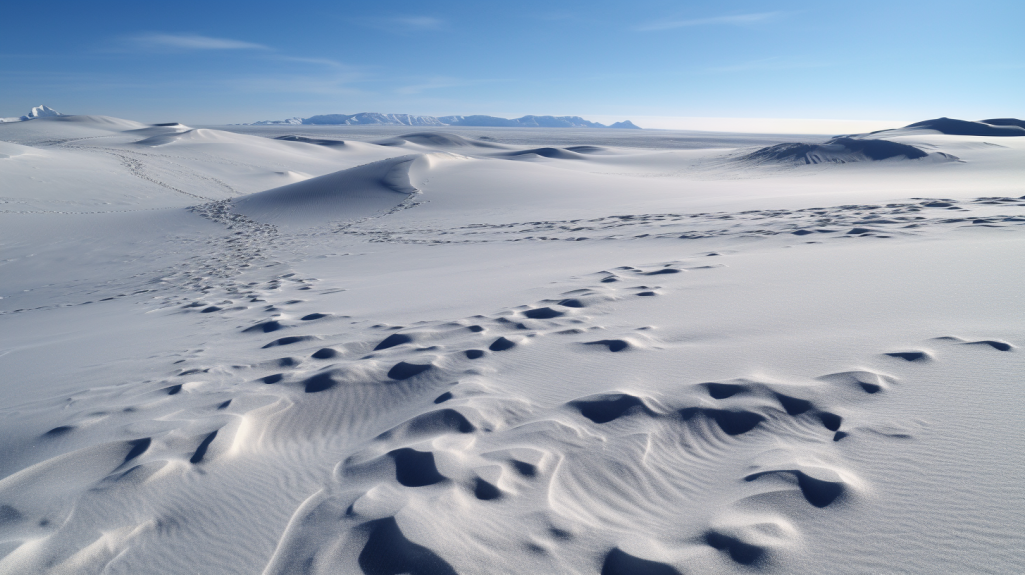When we think of deserts, the image that usually comes to mind is one of vast, sandy landscapes under a scorching sun. However, there exists a type of desert that defies this stereotype entirely—the polar desert. These icy, barren wastelands, found at the Earth’s poles, may seem inhospitable, but they are home to a remarkable array of life. In this article, we’ll embark on a journey to uncover the hidden biodiversity of the polar deserts, specifically focusing on the Arctic region.
The Arctic Desert: A Cold Oasis
The Arctic, located at the northernmost reaches of our planet, is often associated with extreme cold and ice-covered landscapes. In many ways, it is the epitome of a desert—extremely dry, receiving minimal precipitation, and experiencing harsh environmental conditions. However, the Arctic is far from lifeless. It’s a land of stunning contrasts, where life has adapted to survive and thrive in an environment that challenges the very essence of existence.
Biodiversity in the Arctic Desert
- Microbial Life
The Arctic desert may appear barren to the naked eye, but it teems with microbial life. Microorganisms, such as bacteria and fungi, are essential components of the Arctic ecosystem. These tiny organisms play crucial roles in nutrient cycling and soil formation. They can survive in extreme cold, and some can even thrive in sub-zero temperatures. Microbes are responsible for decomposing organic matter, breaking down nutrients, and creating a foundation for the Arctic food web.
- Flora of the Tundra
One of the most distinctive features of the Arctic is its tundra landscape. The Arctic tundra is characterized by a cold, harsh climate, permafrost, and a short growing season. Despite these challenges, a variety of plant species have adapted to this unique environment. Low-growing plants like mosses, lichens, and hardy shrubs dominate the landscape.
One remarkable Arctic plant is the Arctic poppy (Papaver radicatum), a small, delicate flower that manages to bloom in the brief Arctic summer. These vibrant blossoms provide crucial nectar for pollinators, supporting a web of life that extends to insects, birds, and beyond.
- Wildlife in the Arctic
The Arctic is also home to a diverse range of animal species, many of which are highly adapted to the frigid conditions. Some iconic Arctic creatures include:
a. Polar Bears: Perhaps the most famous Arctic inhabitants, polar bears (Ursus maritimus) are apex predators perfectly adapted to hunting seals on the sea ice. Their thick fur and layers of blubber provide insulation against the cold.
b. Arctic Foxes: These small, nimble foxes have adapted to the Arctic by changing their fur color from brown to white in the winter, helping them blend into the snowy landscape.
c. Caribou (Reindeer): The Arctic’s only large herbivore, caribou are adapted for extreme cold and long migrations. They are a vital food source for many predators.
d. Snowy Owls: These majestic birds of prey are well-equipped for hunting in the Arctic. Their thick feathers and sharp talons make them formidable hunters.
- Marine Life
The Arctic Ocean, despite being covered by ice for much of the year, is also a hotspot of biodiversity. Beneath the ice, a vibrant underwater world thrives. Some of the remarkable species found here include:
a. Narwhals: Known for their long, spiral tusks, narwhals are elusive and unique Arctic whales. They use their tusks for communication and possibly hunting.
b. Arctic Cod: These small fish are a cornerstone of the Arctic marine food web, providing sustenance for numerous predators, including seals, birds, and larger fish.
c. Ringed Seals: These seals are perfectly adapted to life in the Arctic, with a spotted coat and the ability to create and maintain breathing holes in the ice.
d. Beluga Whales: Known as the “canaries of the sea” due to their vocalizations, belugas are social, intelligent, and can be found in Arctic waters.
Challenges to Arctic Biodiversity
While the Arctic is a testament to the resilience of life, it faces numerous challenges that threaten its biodiversity:
- Climate Change: The Arctic is warming at twice the global average rate. This rapid warming is causing the melting of sea ice, which in turn affects the entire Arctic ecosystem. Species that depend on ice, such as polar bears and seals, are facing unprecedented challenges.
- Pollution: Arctic ecosystems are vulnerable to pollutants, including persistent organic pollutants (POPs) that accumulate in the food chain. These chemicals can have detrimental effects on Arctic wildlife.
- Habitat Loss: As human activities expand in the Arctic, habitat destruction and fragmentation can disrupt the natural behavior and migration patterns of many species.
- Overfishing: Overfishing in the Arctic Ocean threatens the stability of marine ecosystems and the survival of important species like Arctic cod.
Conservation Efforts
Despite these challenges, there are ongoing efforts to protect and preserve the unique biodiversity of the Arctic:
- Marine Protected Areas (MPAs): Various Arctic countries have established MPAs to safeguard critical habitats and species. These areas restrict certain human activities to minimize their impact on the environment.
- Climate Mitigation: International agreements like the Paris Agreement aim to reduce greenhouse gas emissions and slow down Arctic warming.
- Research and Monitoring: Scientists and organizations are conducting extensive research to better understand Arctic ecosystems, monitor changes, and develop conservation strategies.
- Indigenous Stewardship: Indigenous communities in the Arctic have lived sustainably in this harsh environment for centuries. Their traditional knowledge and practices play a vital role in conservation efforts.
Conclusion
The Arctic desert, with its extreme conditions and stunning biodiversity, is a testament to the adaptability and resilience of life on Earth. While it faces numerous challenges, from climate change to pollution, conservation efforts and research are helping protect this fragile ecosystem. As we learn more about the intricacies of the Arctic, we also gain a deeper appreciation for the importance of preserving this unique and invaluable corner of our planet. It is a reminder that even in the harshest of environments, life finds a way to flourish.

